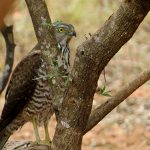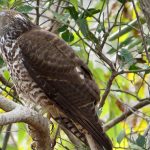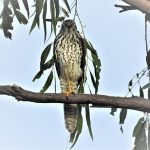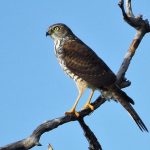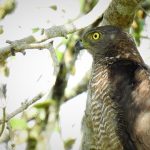BROWN GOSHAWK
The Brown Goshawk is a bird of prey belonging to the Accipitridae family. It is native to Australia, New Guinea, and nearby islands. The species is known for its striking appearance, hunting behavior, and adaptation to various habitats.
The Brown Goshawk exhibits sexual dimorphism, with females being larger than males. Adult males typically have a slate-grey upper body and a finely barred chest with rufous (reddish-brown) undersides. Adult females have a similar color pattern but are larger and more heavily marked. Juveniles often resemble adults of the opposite sex, with the plumage becoming more mature as they age.
Brown Goshawks inhabit a range of habitats, including forests, woodlands, shrublands, and urban areas. They are versatile in their choice of habitat and can be found in both rural and suburban environments.
These raptors are skilled hunters that primarily feed on birds and small mammals. Their diet may include a variety of prey species such as pigeons, doves, small parrots, and even bats. They are agile and stealthy hunters, often surprising their prey with sudden attacks.
Brown Goshawks are known for their swift flight and ability to maneuver through dense vegetation in pursuit of prey. They may also employ a “perch-and-pounce” hunting technique, where they wait quietly on a perch and then swiftly descend upon unsuspecting prey. They have sharp talons and a strong grip, which helps them catch and hold onto their prey.
These birds build nests in trees, often choosing a well-concealed location. The nests are constructed using sticks and lined with softer materials like leaves and bark. The female usually lays 2-4 eggs, which she incubates for several weeks. The male assists in providing food for the female and the chicks during the nesting period.
Like many raptors, it can face threats such as habitat loss, human disturbance, and pesticide exposure.

